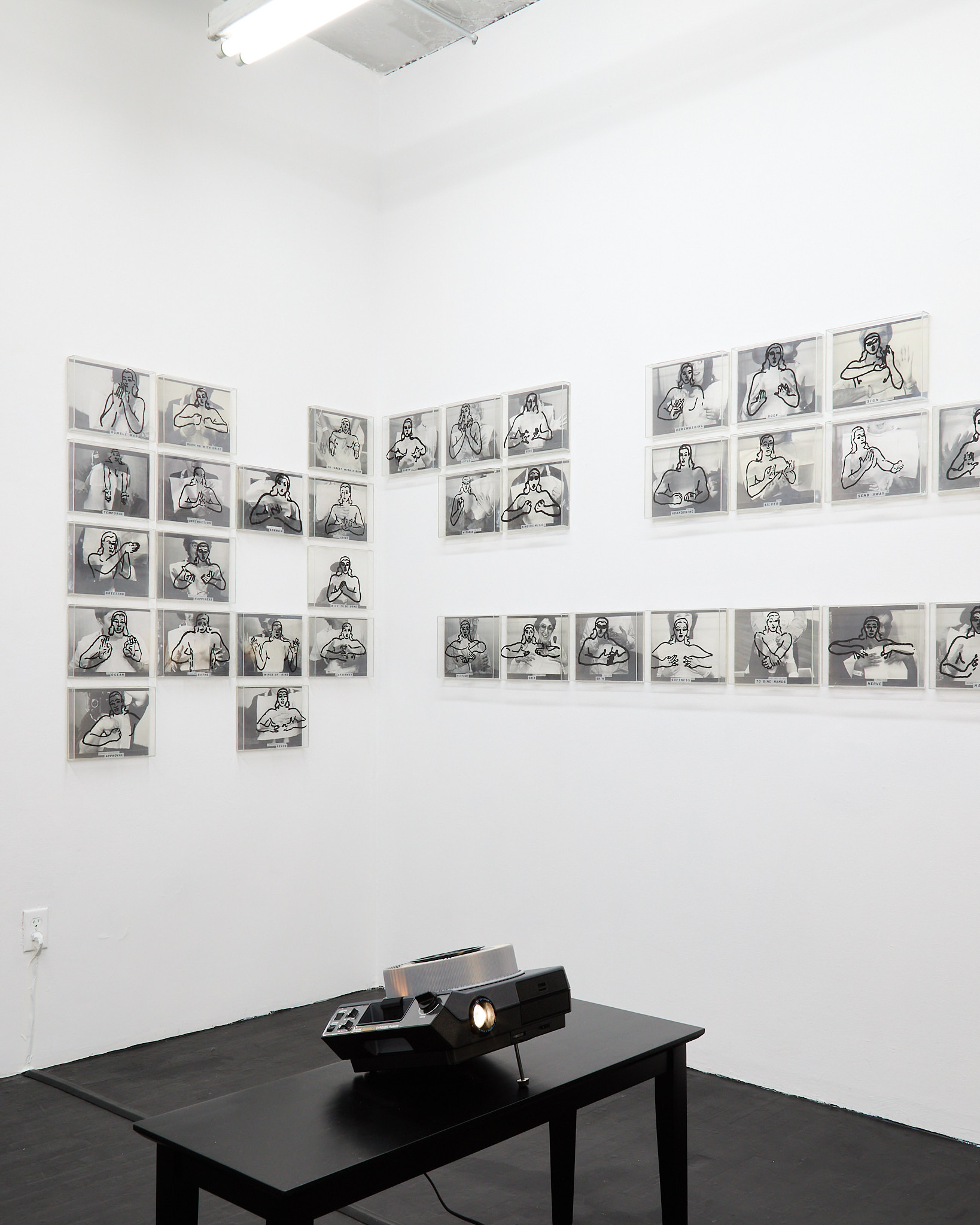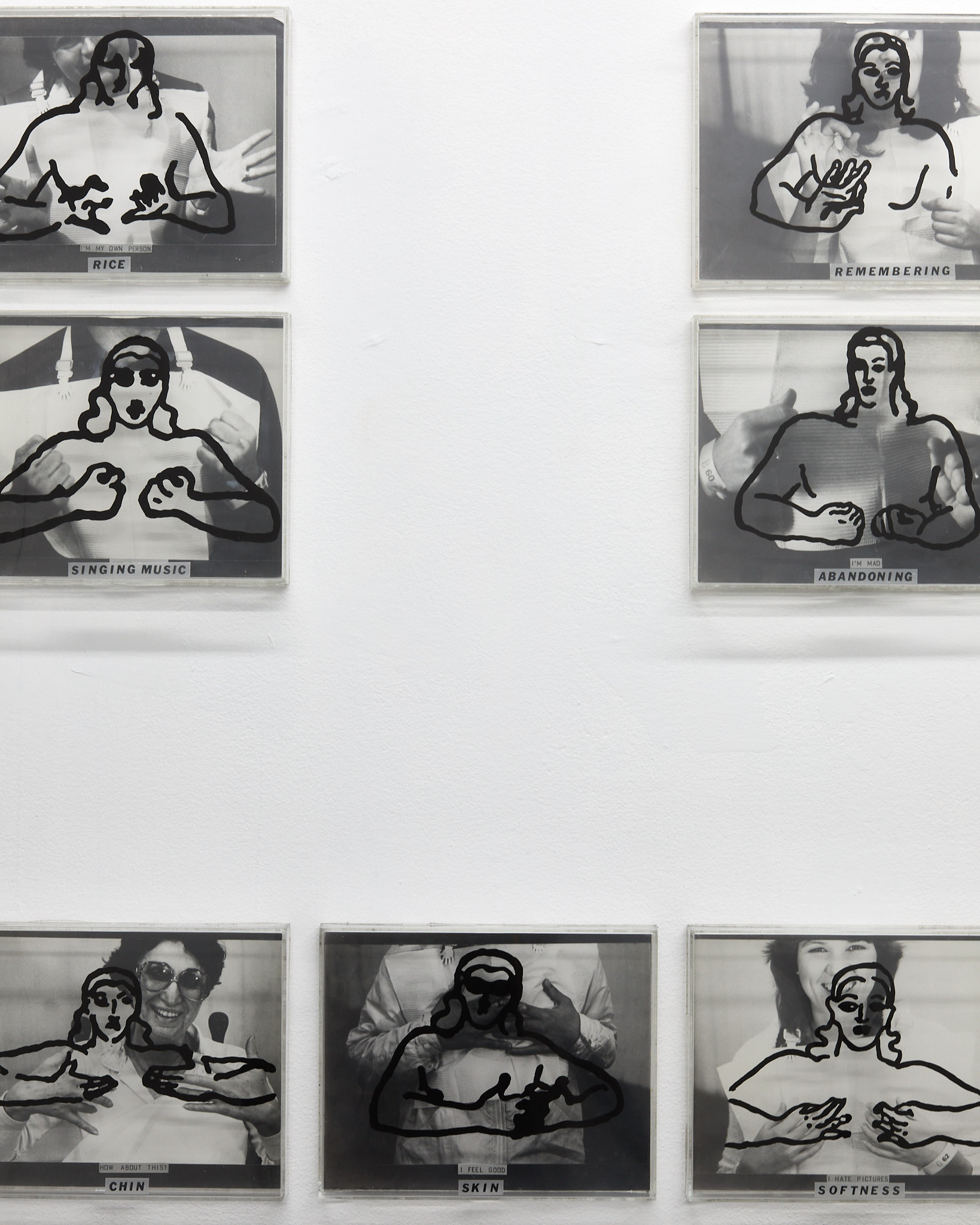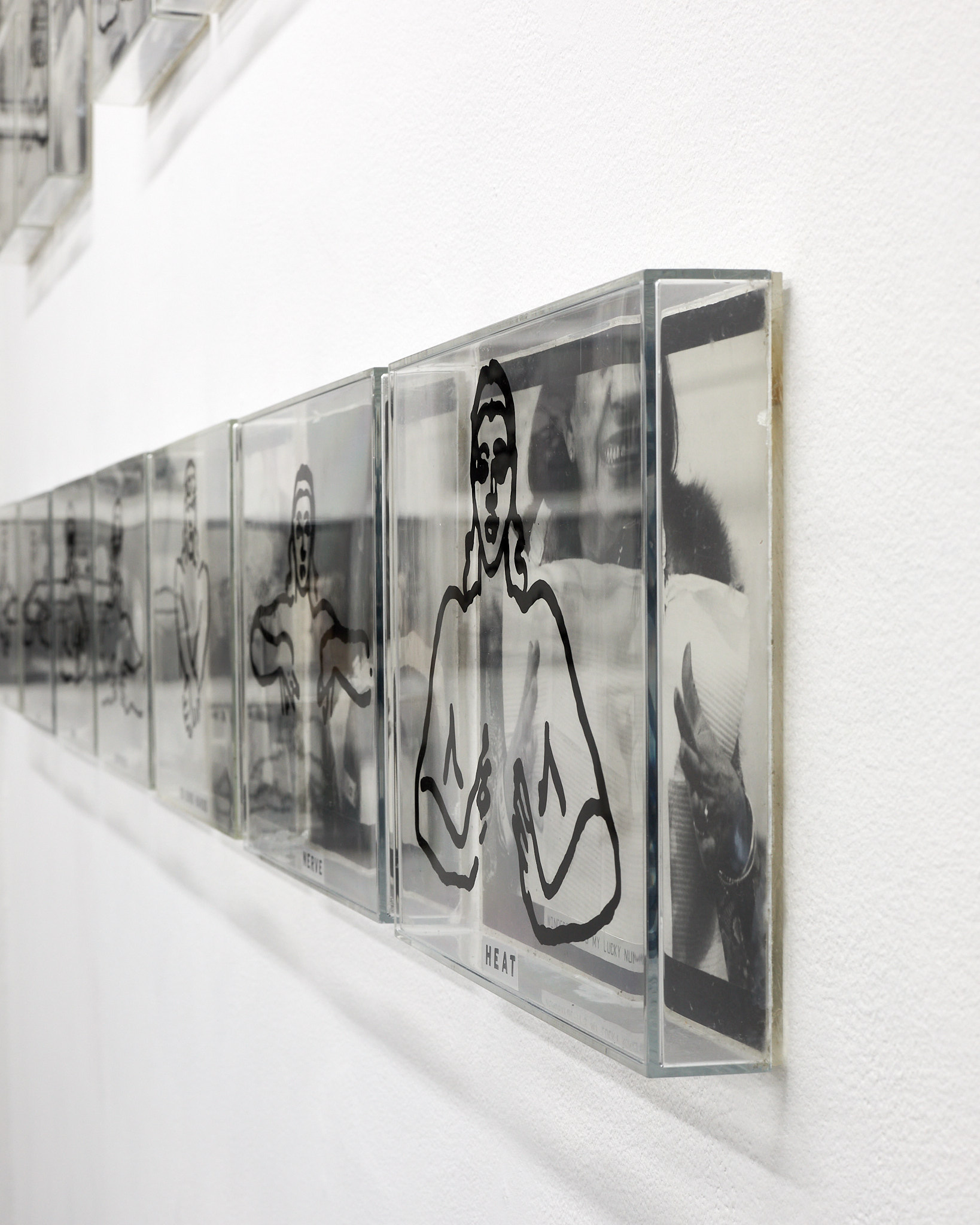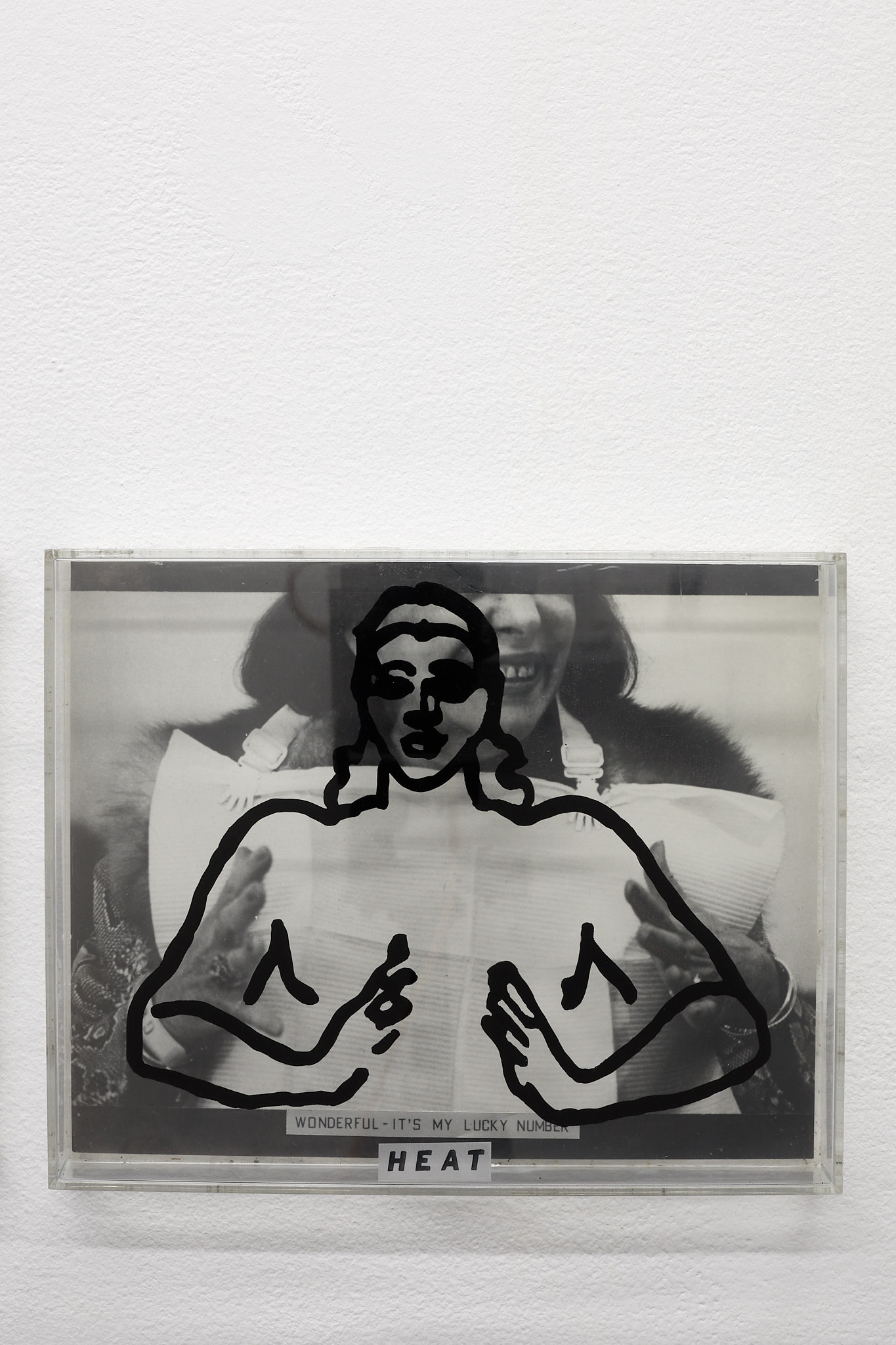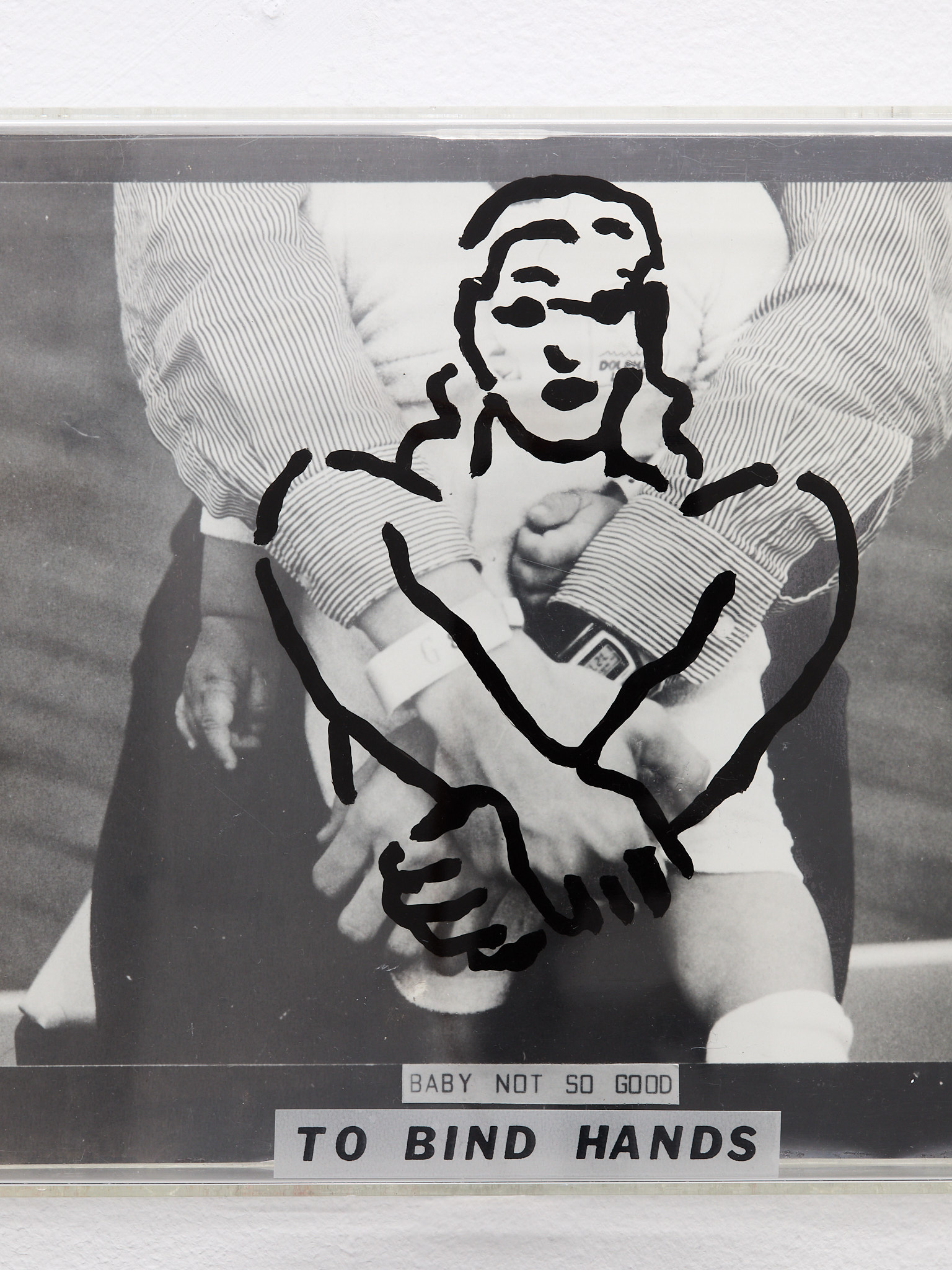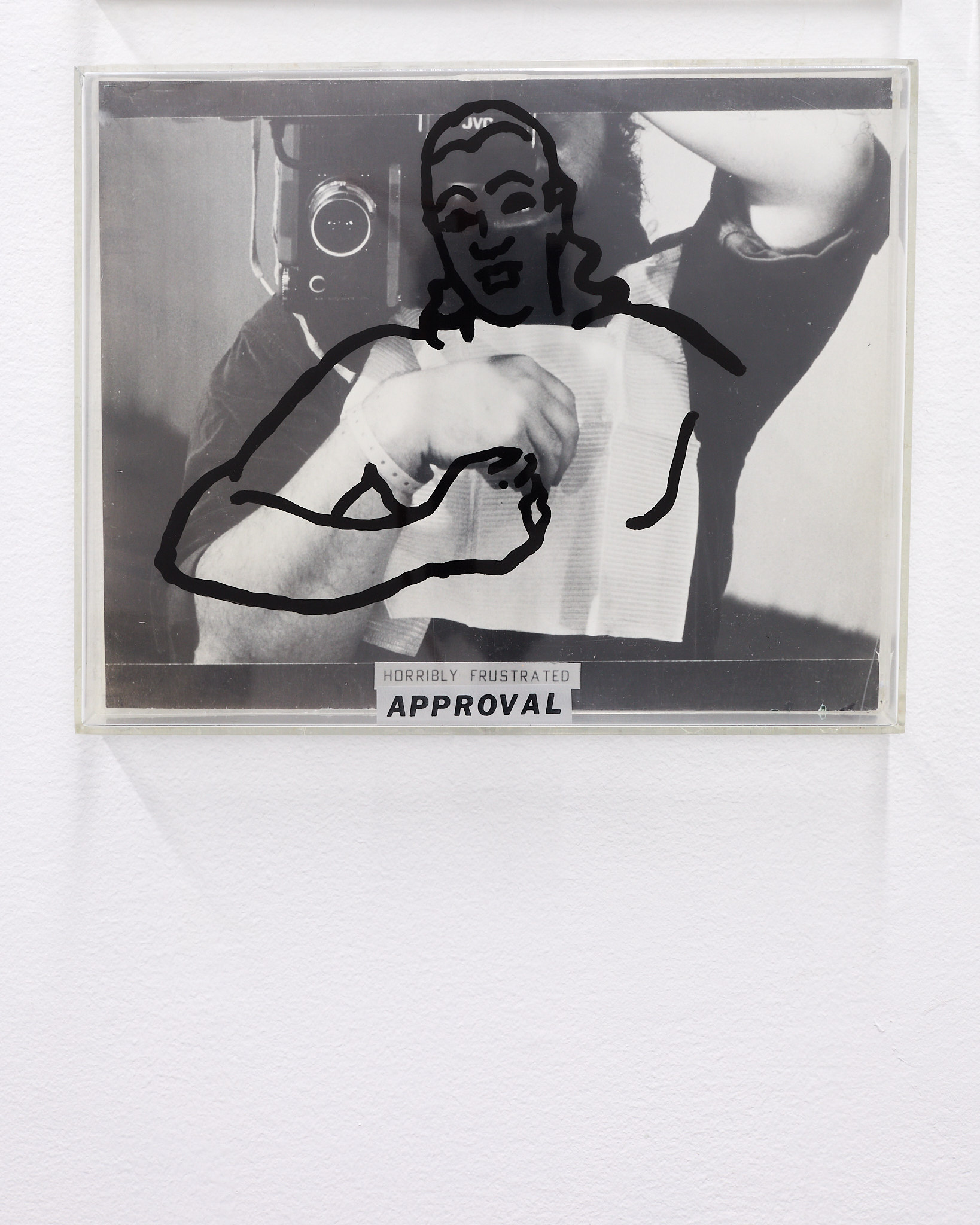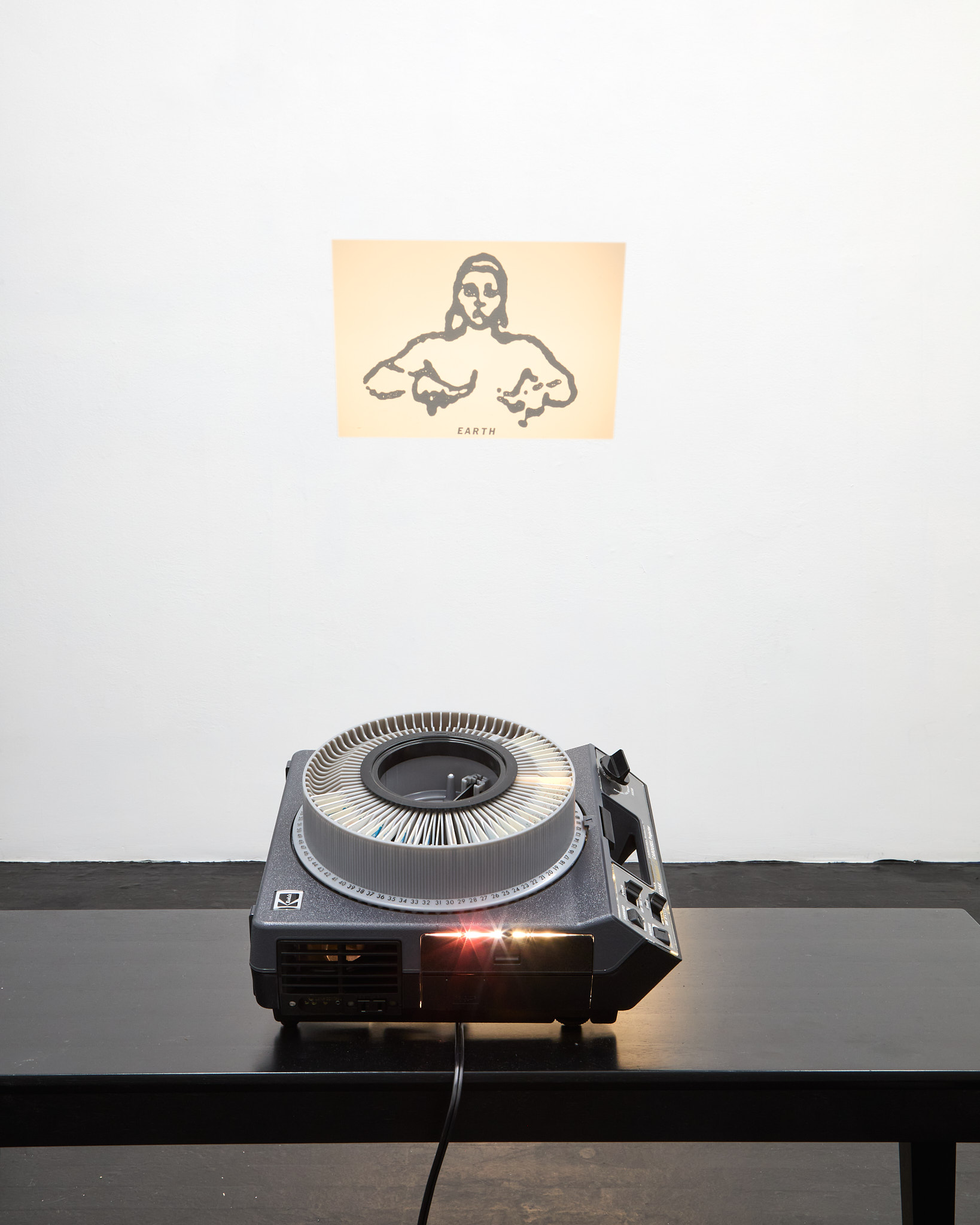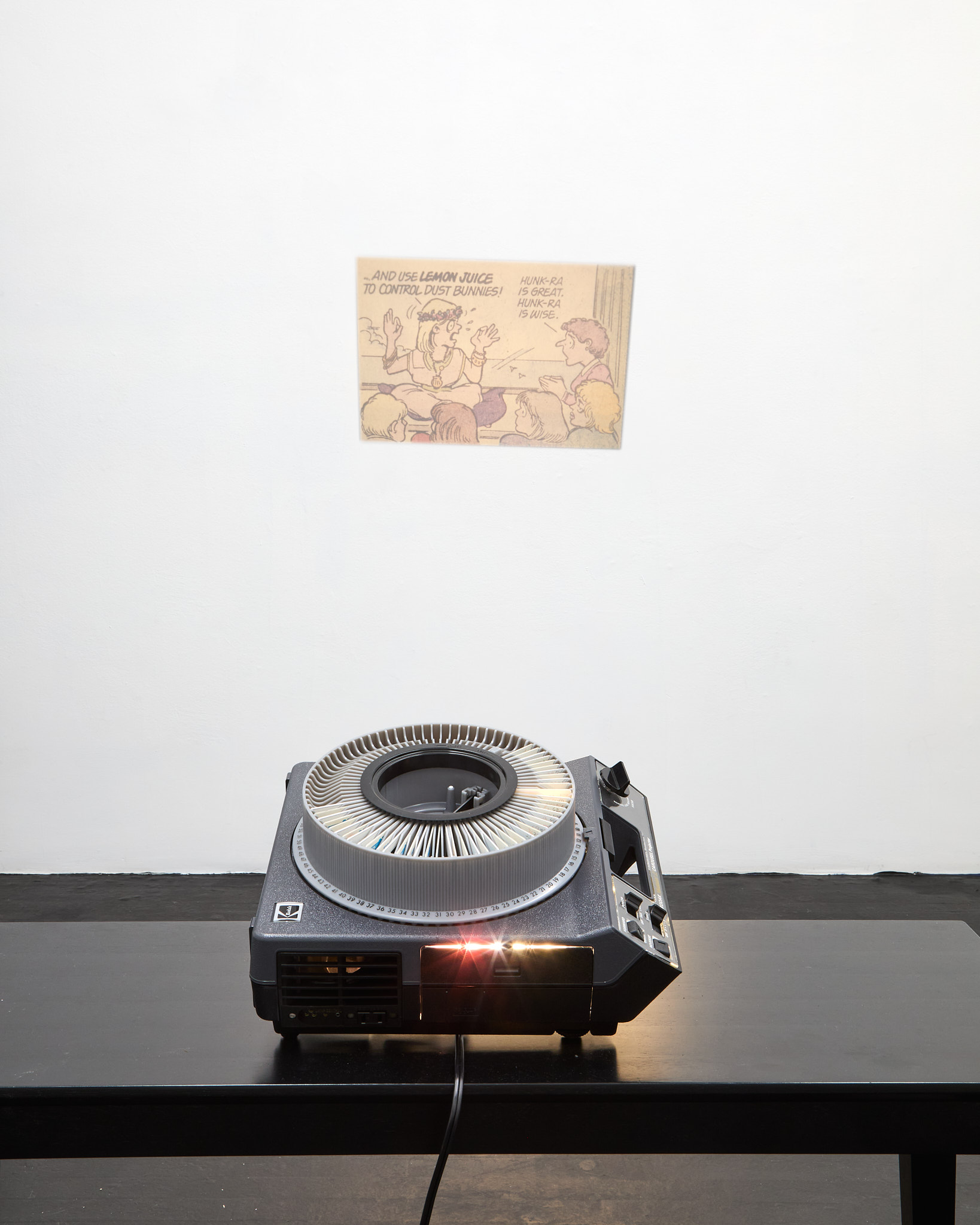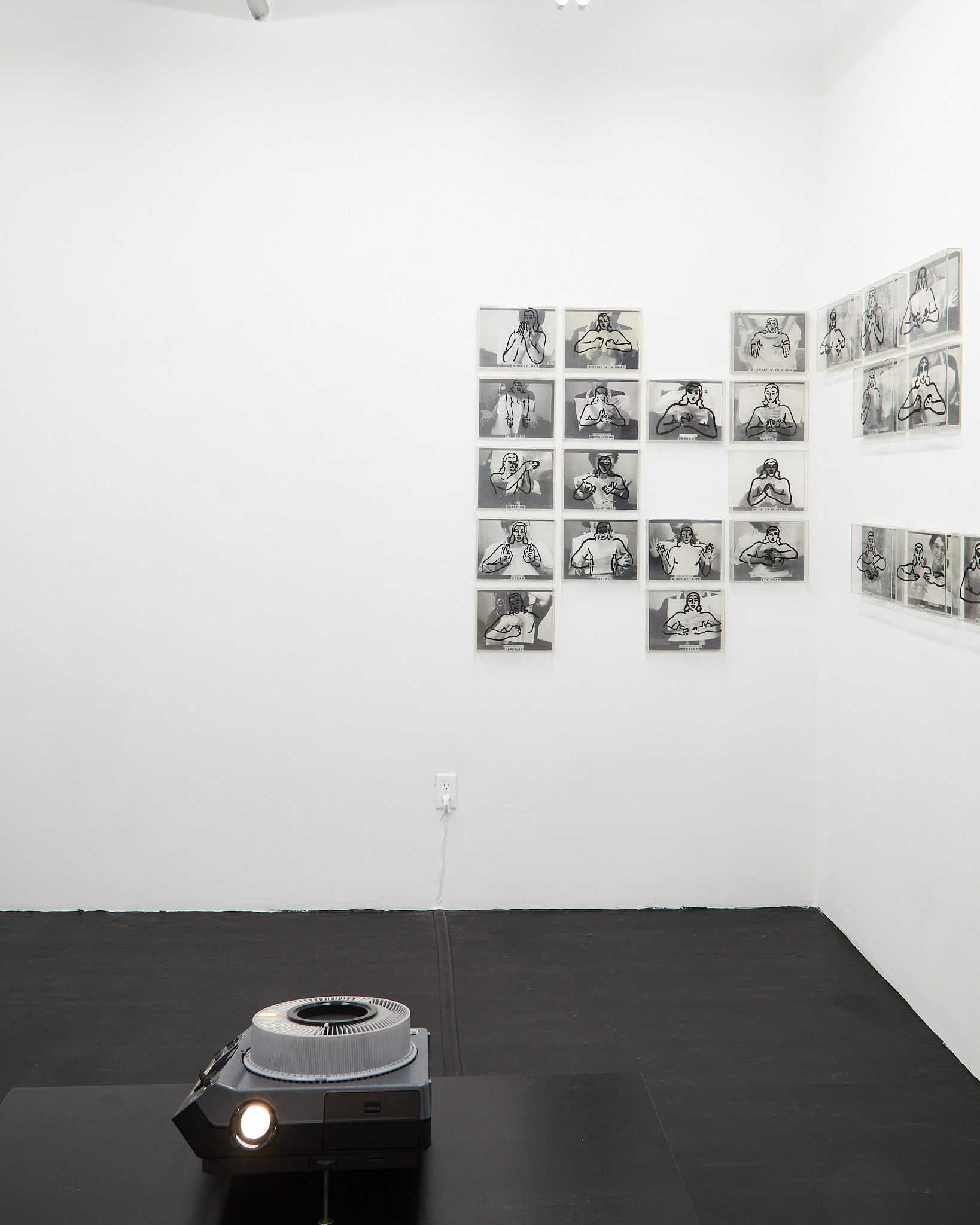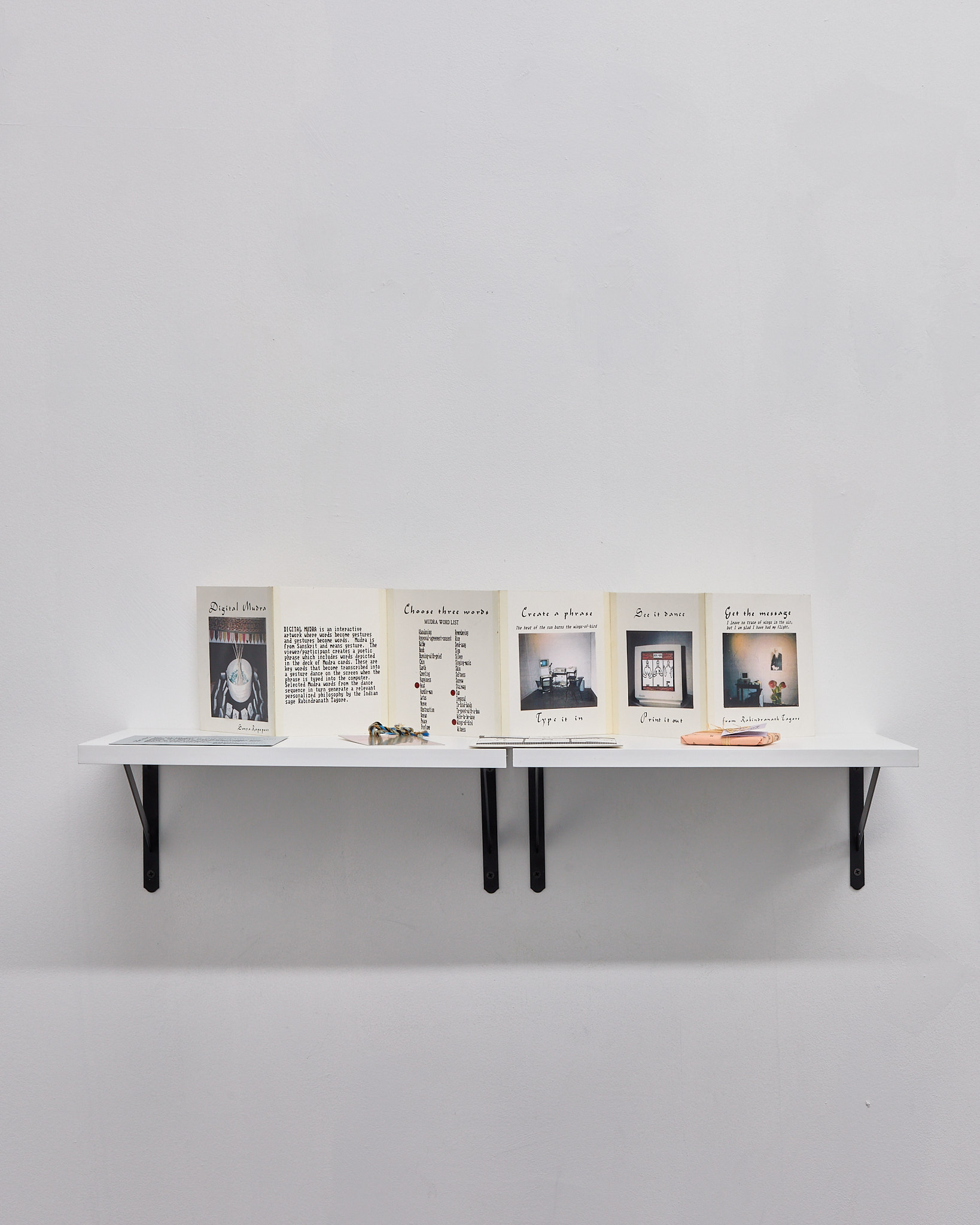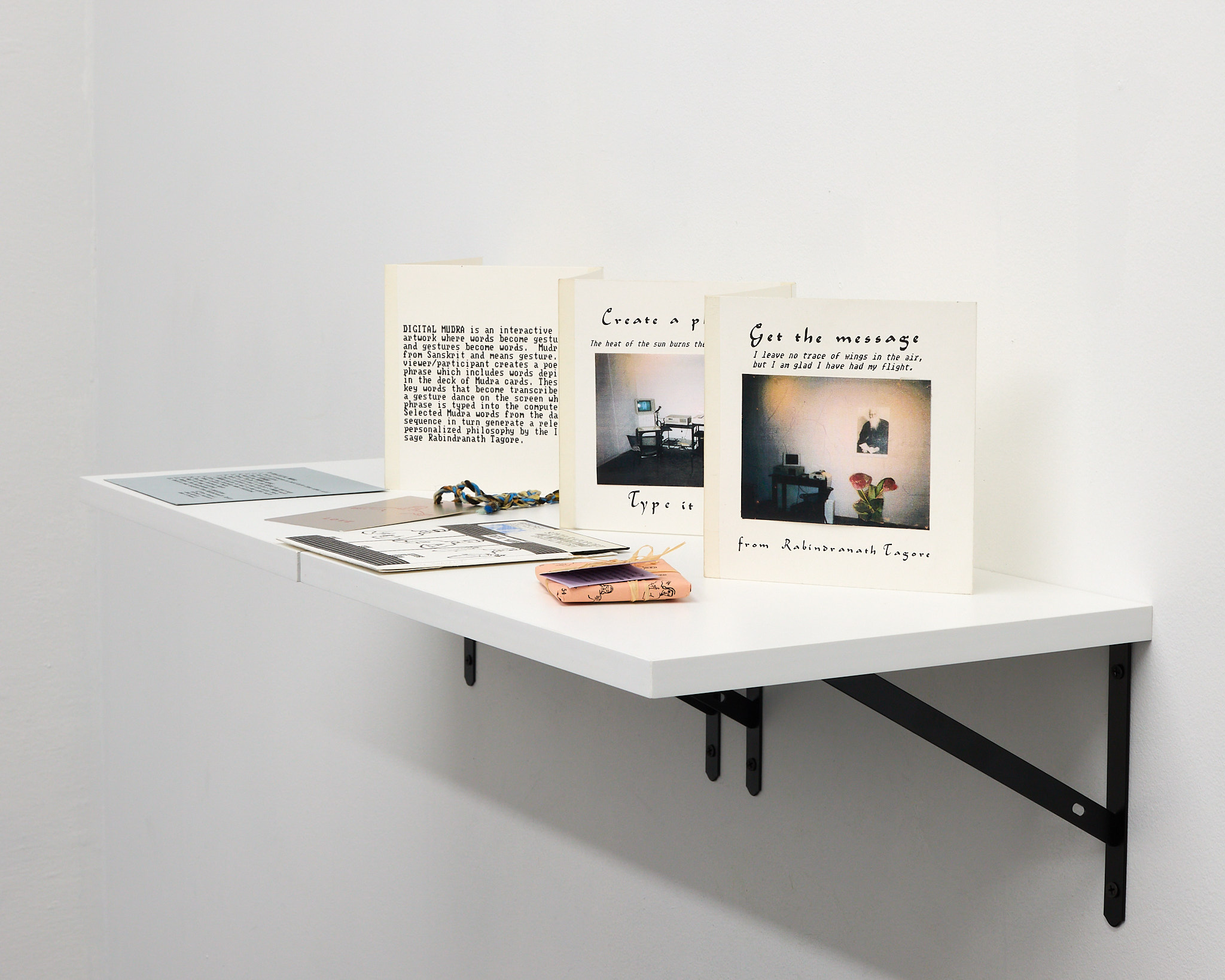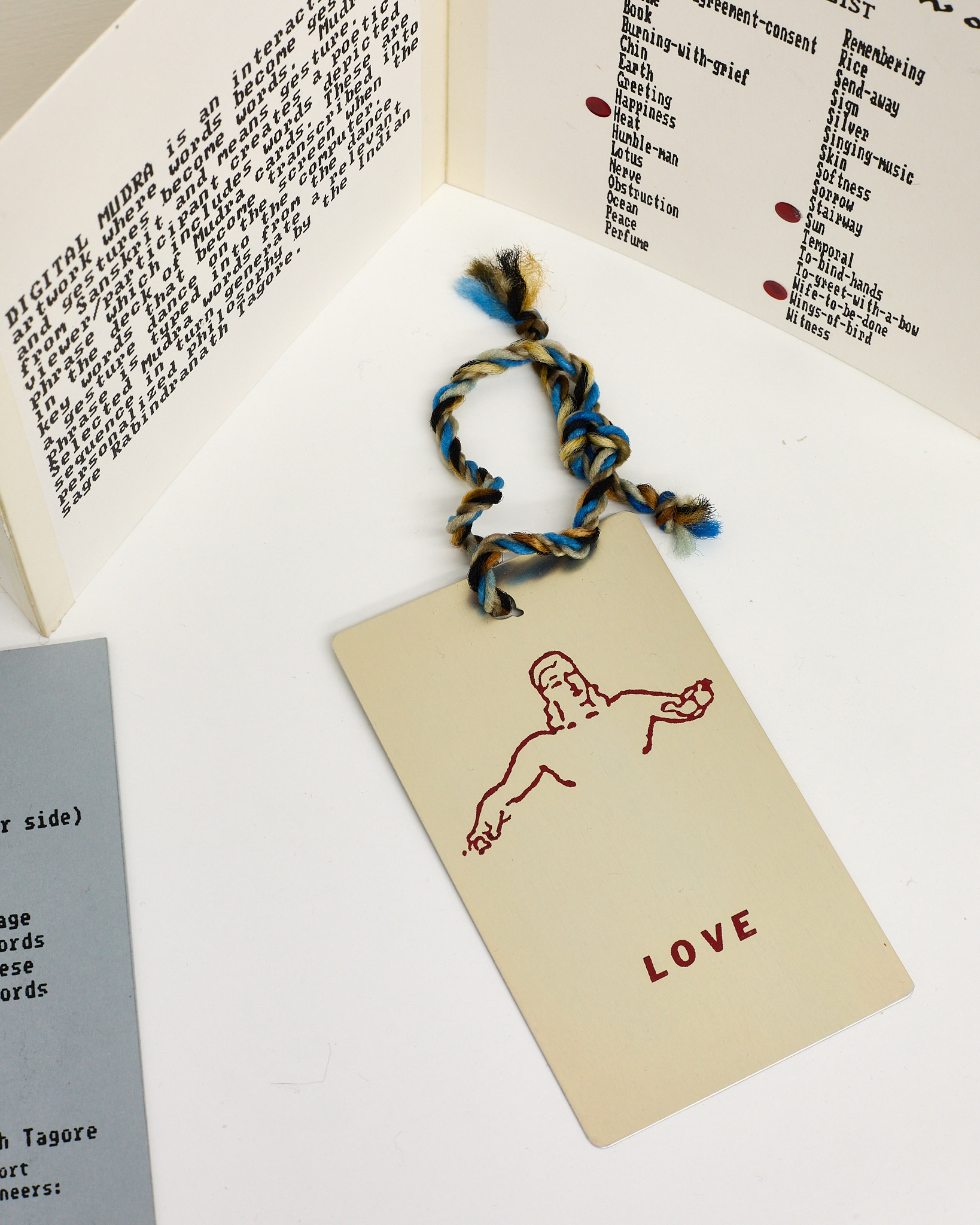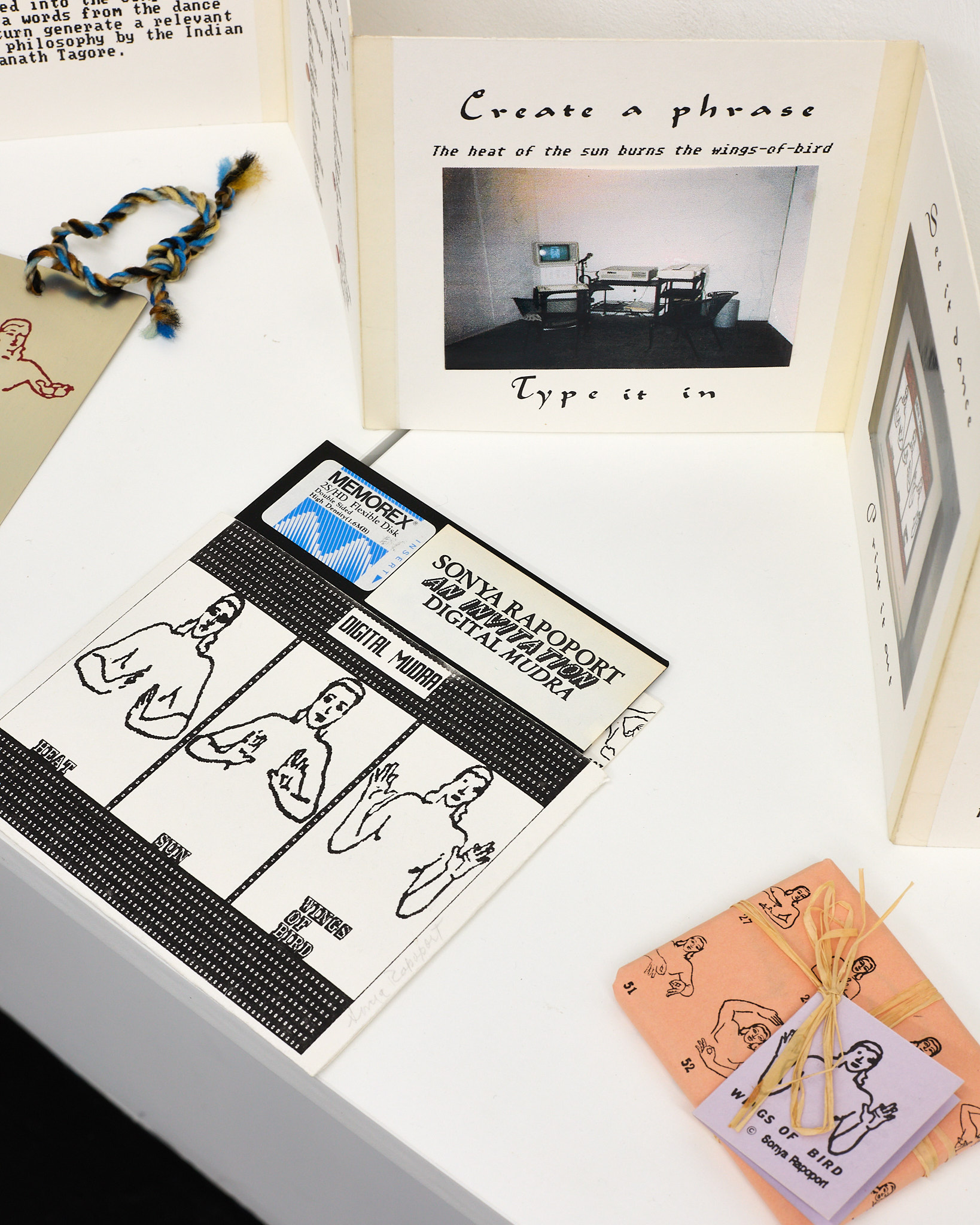Sonya Rapoport
Digital Mudra (1986-89)
Bibeau Krueger is pleased to announce Sonya Rapoport: Digital Mudra (1986–1989), an exhibition presenting original photographs, 35mm slides, and an artist-published edition by Sonya Rapoport (1923–2015). This is the artist's first solo exhibition in New York City since 1981.
Sonya Rapoport (American, b. 1923, Brookline, MA; d. 2015, Berkeley, CA) is considered a pioneer in new media. Rapoport used the personal computer in interactive gallery exhibitions as early as 1982 to explore what she called “soft material:” data about domestic spaces, sentimental objects, her shoe collection, and emotional states, subjects that she characterized as explicitly feminist. Rapoport's tenacity in developing material methodologies for creating artwork in relation to the accelerated information age in which she lived included multivariate participant-based installations with an emphasis on pattern-finding and organizational similarities shared between humans and their data sets.
By cataloging human behavior, Rapoport analyzed the personal and the political through data, performance, and photographic media. Digital Mudra grew from Rapoport’s fascination with the way meaning can be expressed through gesture. She began with a set of photographs of participant’s hands derived from her computer-mediated performance Biorhythm (Works Gallery, San José, California, 1983), in which she gathered data about viewers’ personalities and emotional states. Searching for preexisting systems to categorize and decode these ambiguous gestures, she identified the mudra gesture language used in South Indian kathakali dance tradition, in which the positions of the hands and fingers translate to specific words or concepts that can be used to tell a story.
Anchoring the exhibition are thirty-five wall-mounted plexiglass frames arranged in an irregular grid pattern that relate to a poem, providing a visual sequence for photographs from Biorhythm. Each photograph is mounted in an acrylic shadow box and superimposed with a mudra that visually matches the gesture in the photograph. These are labeled with phrases that participants used to express how they were feeling, as well as translations of the mudras. This work was first exhibited in the computer-mediated “audience participation performance” Digital Mudra, at KALA Art Institute, Berkeley, in 1987, in which Rapoport worked with esteemed kathakali dancer K.P. Kunhiraman (1931-2014).
The current exhibition also includes a projected 35mm slide show featuring hand gestures clipped from newspapers in the mid-1980s. These images include world leaders and public figures, as well as comic strip characters, each matched with a mudra gesture. The juxtaposition of reportage of political violence and international conflict with bizarre or childish humor is both jarring and typical of Rapoport’s practice, which is both a serious attempt to create new systems of understanding of the human condition, and a lighthearted parody which pokes fun at itself. Rapoport offers the paranoid suggestion that there exists a secret gesture language which, analyzed by computer, can be used to decode subconscious patterns in human relationships.
The final element of the exhibition is an artist book and software publishing project Digital Mudra (diskette), (1988), which contains documentation of the interactive exhibition, an instructional booklet, thirty-five digital mudra cards, and a floppy disk with an interactive program that prompts viewers to select mudras and compose a poem. This reflects Rapoport’s active participation in early computer-networked creative communities, including Fine Art Forum and Art Com, which distributed Rapoport’s software. A related version of Digital Mudra was also published online in 1989, predating the World Wide Web.
Sonya Rapoport’s (b. 1923, Brookline, MA; d. 2015, Berkeley, CA) work has been included in numerous exhibitions including the STARS Gallery (Los Angeles), Los Angeles Museum of Contemporary Art (Los Angeles, CA), di Rosa Center for Contemporary Art, (Napa, CA), San Jose Museum of Art (San Jose CA), Victoria & Albert Museum (London), Zero1 Biennial (Silicon Valley), Museo Reina Sofia (Madrid), Bienal de Arte (Buenos Aires) and Documenta 8 (Kassel, Germany), and Casemore Gallery (San Francisco). She was the subject of late-career retrospective exhibitions at KALA Art Institute, Berkeley (2011), Mills College Art Museum, Oakland (2012), The Fresno Art Museum (2013) and the book Pairing of Polarities: The Life and Art of Sonya Rapoport, edited by Terri Cohn (Heyday, 2012). Her archives are preserved in the Bancroft Library at the University of California, Berkeley.
The Sonya Rapoport Legacy Trust was established by artist Sonya Rapoport during her lifetime to steward her art estate, to preserve and contextualize the history of her studio art practice through a living archive, and to expand the cultural legacy of her work. The Trust maintains a collection of Rapoport’s art objects dating from the 1940s through 2015, including definitive collections of her computer-mediated interactive installations. The Sonya Rapoport Legacy Trust is directed by Farley Gwazda, who worked with Sonya Rapoport as an artists’ assistant during her lifetime, prepared her papers to be archived at the Bancroft Library at UC Berkeley, and completed the process of inventorying and preserving her work after her death.
Documentation by Michael Popp
![]()
![]()
![]()
![]()
![]()
![]()
![]()
![]()
![]()
![]()
![]()
![]()
![]()
![]()
![]()
![]()
![]()
Digital Mudra (1986-89)
Bibeau Krueger is pleased to announce Sonya Rapoport: Digital Mudra (1986–1989), an exhibition presenting original photographs, 35mm slides, and an artist-published edition by Sonya Rapoport (1923–2015). This is the artist's first solo exhibition in New York City since 1981.
Sonya Rapoport (American, b. 1923, Brookline, MA; d. 2015, Berkeley, CA) is considered a pioneer in new media. Rapoport used the personal computer in interactive gallery exhibitions as early as 1982 to explore what she called “soft material:” data about domestic spaces, sentimental objects, her shoe collection, and emotional states, subjects that she characterized as explicitly feminist. Rapoport's tenacity in developing material methodologies for creating artwork in relation to the accelerated information age in which she lived included multivariate participant-based installations with an emphasis on pattern-finding and organizational similarities shared between humans and their data sets.
By cataloging human behavior, Rapoport analyzed the personal and the political through data, performance, and photographic media. Digital Mudra grew from Rapoport’s fascination with the way meaning can be expressed through gesture. She began with a set of photographs of participant’s hands derived from her computer-mediated performance Biorhythm (Works Gallery, San José, California, 1983), in which she gathered data about viewers’ personalities and emotional states. Searching for preexisting systems to categorize and decode these ambiguous gestures, she identified the mudra gesture language used in South Indian kathakali dance tradition, in which the positions of the hands and fingers translate to specific words or concepts that can be used to tell a story.
Anchoring the exhibition are thirty-five wall-mounted plexiglass frames arranged in an irregular grid pattern that relate to a poem, providing a visual sequence for photographs from Biorhythm. Each photograph is mounted in an acrylic shadow box and superimposed with a mudra that visually matches the gesture in the photograph. These are labeled with phrases that participants used to express how they were feeling, as well as translations of the mudras. This work was first exhibited in the computer-mediated “audience participation performance” Digital Mudra, at KALA Art Institute, Berkeley, in 1987, in which Rapoport worked with esteemed kathakali dancer K.P. Kunhiraman (1931-2014).
The current exhibition also includes a projected 35mm slide show featuring hand gestures clipped from newspapers in the mid-1980s. These images include world leaders and public figures, as well as comic strip characters, each matched with a mudra gesture. The juxtaposition of reportage of political violence and international conflict with bizarre or childish humor is both jarring and typical of Rapoport’s practice, which is both a serious attempt to create new systems of understanding of the human condition, and a lighthearted parody which pokes fun at itself. Rapoport offers the paranoid suggestion that there exists a secret gesture language which, analyzed by computer, can be used to decode subconscious patterns in human relationships.
The final element of the exhibition is an artist book and software publishing project Digital Mudra (diskette), (1988), which contains documentation of the interactive exhibition, an instructional booklet, thirty-five digital mudra cards, and a floppy disk with an interactive program that prompts viewers to select mudras and compose a poem. This reflects Rapoport’s active participation in early computer-networked creative communities, including Fine Art Forum and Art Com, which distributed Rapoport’s software. A related version of Digital Mudra was also published online in 1989, predating the World Wide Web.
Sonya Rapoport’s (b. 1923, Brookline, MA; d. 2015, Berkeley, CA) work has been included in numerous exhibitions including the STARS Gallery (Los Angeles), Los Angeles Museum of Contemporary Art (Los Angeles, CA), di Rosa Center for Contemporary Art, (Napa, CA), San Jose Museum of Art (San Jose CA), Victoria & Albert Museum (London), Zero1 Biennial (Silicon Valley), Museo Reina Sofia (Madrid), Bienal de Arte (Buenos Aires) and Documenta 8 (Kassel, Germany), and Casemore Gallery (San Francisco). She was the subject of late-career retrospective exhibitions at KALA Art Institute, Berkeley (2011), Mills College Art Museum, Oakland (2012), The Fresno Art Museum (2013) and the book Pairing of Polarities: The Life and Art of Sonya Rapoport, edited by Terri Cohn (Heyday, 2012). Her archives are preserved in the Bancroft Library at the University of California, Berkeley.
The Sonya Rapoport Legacy Trust was established by artist Sonya Rapoport during her lifetime to steward her art estate, to preserve and contextualize the history of her studio art practice through a living archive, and to expand the cultural legacy of her work. The Trust maintains a collection of Rapoport’s art objects dating from the 1940s through 2015, including definitive collections of her computer-mediated interactive installations. The Sonya Rapoport Legacy Trust is directed by Farley Gwazda, who worked with Sonya Rapoport as an artists’ assistant during her lifetime, prepared her papers to be archived at the Bancroft Library at UC Berkeley, and completed the process of inventorying and preserving her work after her death.
Documentation by Michael Popp

